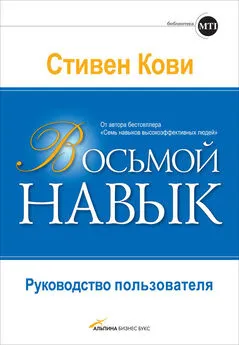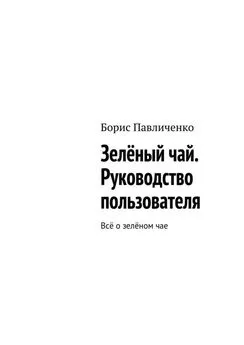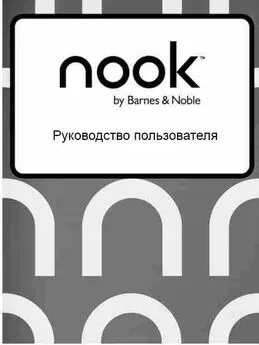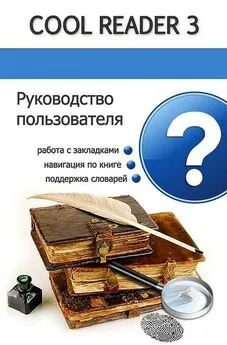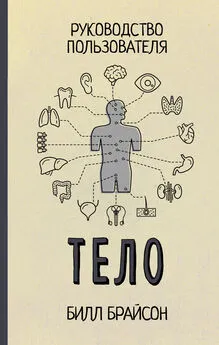Кристи Фанк - Грудь. Руководство пользователя [litres]
- Название:Грудь. Руководство пользователя [litres]
- Автор:
- Жанр:
- Издательство:Литагент 5 редакция «БОМБОРА»
- Год:2020
- Город:Москва
- ISBN:978-5-04-108737-1
- Рейтинг:
- Избранное:Добавить в избранное
-
Отзывы:
-
Ваша оценка:
Кристи Фанк - Грудь. Руководство пользователя [litres] краткое содержание
Грудь. Руководство пользователя [litres] - читать онлайн бесплатно ознакомительный отрывок
Интервал:
Закладка:
61
R. E. Tarone et al., “Breast Reduction Surgery and Breast Cancer Risk: Does Reduction Mammaplasty Have a Role in Primary Prevention Strategies for Women at High Risk of Breast Cancer?” Plastic and Reconstructive Surgery 113, no. 9 (2004): 2104–2110.
62
A. Brodiet, B. Long, and Q. Lu, “Aromatase Expression in the Human Breast,” Breast Cancer Research and Treatment 49, no. 1 (1998): S85–S91; K. Lund, M. Ewertz, and G. Schou, “Breast Cancer Incidence Subsequent to Surgical Reduction of the Female Breast,” Scandinavian Journal of Plastic Surgery and Hand Surgery 21, no. 2 (1987): 209–212.
63
D. Trichopoulos and L. Lipworth, “Is Cancer Causation Simpler Than We Thought, but More Intractable?” Epidemiology 6, no. 4 (1995): 347–349; W. Y. J. Imagawa, R. Guzman, and S. Nandi, Control of Mammary Gland Growth and Differentiation , 2nd ed. (New York: Raven Press, 1994); R. T. Senie et al., “Is Breast Size a Predictor of Breast Cancer Risk or the Laterality of the Tumor?” Cancer Causes and Control 4, no. 3 (1993): 203–208.
64
A. S. Kusano et al., “A Prospective Study of Breast Size and Premenopausal Breast Cancer Incidence,” International Journal of Cancer 118, no. 8 (2006): 2031–2034.
65
R. T. Senie et al., “Is Breast Size a Predictor of Breast Cancer Risk or the Laterality of the Tumor?” Cancer Causes and Control 4, no. 3 (1993): 203–208; R. N. Katariya, A. P. Forrest, and I. H. Gravelle, “Breast Volumes in Cancer of the Breast,” British Journal of Cancer 29, no. 3 (1974): 270–273; E. Thurfjell et al., “Breast Size and Mammographic Pattern in Relation to Breast Cancer Risk,” European Journal of Cancer Prevention 5, no. 1 (1996): 37–41; E. L. Wynder, I. J. Bross, and T. Hirayama, “A Study of the Epidemiology of Cancer of the Breast,” Cancer 13 (1960): 559–601; H. O. Adami and A. Rimsten, “Adipose Tissue and Aetiology of Breast Cancer,” The Lancet 2, no. 8091 (1978): 677–678; T. Hirohata, A. M. Nomura, and L. N. Kolonel, “Breast Size and Cancer,” British Medical Journal 2, no. 6087 (1977): 641; I. Soini, “Risk Factors of Breast Cancer in Finland,” International Journal of Epidemiology 6, no. 4 (1977): 365–373; A. Tavani et al., “Breast Size and Breast Cancer Risk,” European Journal of Cancer Prevention 5, no. 5 (1996): 337–342.
66
C. T. Pham and S. J. McPhee, “Knowledge, Attitudes, and Practices of Breast and Cervical Cancer Screening among Vietnamese Women,” Journal of Cancer Education 7, no. 4 (1992): 305–310.
67
R. J. Donovan et al., “Changes in Beliefs about Cancer in Western Australia, 1964–2001,” Medical Journal of Australia 181 (2004): 23–25. Глава третья. Съешьте это
68
T. P. Butler and P. M. Gullino, “Quantitation of Cell Shedding into Efferent Blood of Mammary Adenocarcinoma,” Cancer Research 35, no. 3 (1975): 512–516.
69
T. M. Campbell II, The China Study: The Most Comprehensive Study of Nutrition Ever Conducted and the Startling Implications for Diet, Weight Loss, and Long-Term Health (Dallas, TX: BenBella Books, 2004).
70
M. O. Harris et al., “Grasses and Gall Midges: Plant Defense and Insect Adaptation,” Annual Review of Entomology 48, no. 1 (2003): 549–577.
71
A. A. Oliveira et al., “Antimicrobial Activity of Amazonian Medicinal Plants,” SpringerPlus 2, no. 1 (2013): 371.
72
J. Sun et al., “Antioxidant and Antiproliferative Activities of Fruits,” Journal of Agricultural and Food Chemistry 50 (2002): 7449–7454; Y. F. Chu et al., “Antioxidant and Antiproliferative Activities of Vegetables,” Journal of Agricultural and Food Chemistry 50 (2002): 6910–6916; L. O. Dragsted, M. Strube, and J. C. Larsen, “Cancer-Protective Factors in Fruits and Vegetables: Biochemical and Biological Background,” Pharmacology and Toxicology 72 (1993): 116–135; A. R. Waladkhani and M. R. Clemens, “Effect of Dietary Phytochemicals on Cancer Development,” International Journal of Molecular Medicine 1 (1998): 747–753.
73
M. Valko et al., “Free Radicals, Metals, and Antioxidants in Oxidative Stress-Induced Cancer,” Chemico-Biological Interactions 160, no. 1 (2006): 1–40.
74
B. Burton-Freeman et al., “Strawberry Modulates LDL Oxidation and Postprandial Lipemia in Response to High-Fat Meal in Overweight Hyperlipidemic Men and Women,” Journal of the American College of Nutrition 29, no. 1 (2010): 46–54.
75
M. A. Martinez-Gonzalez and N. Martin-Calvo, “Mediterranean Diet and Life Expectancy: Beyond Olive Oil, Fruits, and Vegetables,” Current Opinion in Clinical Nutrition and Metabolic Care 19, no. 6 (2016): 401–407.
76
A. Trichopoulou, P. Lagiou, H. Kuper, and D. Trichopoulos, “Cancer and Mediterranean Dietary Traditions,” Cancer Epidemiology, Biomarkers and Prevention 9, no. 9 (2000): 869–873; W. C. Willett et al., “Mediterranean Diet Pyramid: A Cultural Model for Healthy Eating,” The American Journal of Clinical Nutrition 61, no. 6 (1995): 1402S–1406S; F. Levi, F Lucchini, and C La Vecchia, “Worldwide Patterns of Cancer Mortality,” European Journal of Cancer Prevention 3 (1994): 109–143.
77
A. Castelló et al., “Spanish Mediterranean Diet and Other Dietary Patterns and Breast Cancer Risk: Case-Control EpiGEICAM Study,” British Journal of Cancer 111, no. 7 (2014): 1454–1462.
78
P. A. van den Brandt and M. Schulpen, “Mediterranean Diet Adherence and Risk of Postmenopausal Breast Cancer: Results of a Cohort Study and Meta-analysis,” International Journal of Cancer 140 (2017): 2220–2231.
79
G. Buckland et al., “Adherence to the Mediterranean Diet and Risk of Breast Cancer in the European Prospective Investigation into Cancer and Nutrition Cohort Study,” International Journal of Cancer 132, no. 12 (2013): 2918–2927.
80
K. Pintha, S. Yodkeeree, and P. Limtrakul, “Proanthocyanidin in Red Rice Inhibits MDA-MB-231 Breast Cancer Cell invasion via the Expression Control of Invasive Proteins,” Biological and Pharmaceutical Bulletin 38, no. 4 (2015): 571–581; E. A. Hudson et al., “Characterization of Potentially Chemopreventive Phenols in Extracts of Brown Rice That Inhibit the Growth of Human Breast and Colon Cancer Cells,” Cancer Epidemiology and Prevention Biomarkers 9, no. 11 (2000): 1163–1170; C. Hui et al., “Anticancer Activities of an Anthocyanin-Rich Extract from Black Rice Against Breast Cancer Cells In Vitro and In Vivo,” Nutrition and Cancer 62, no. 8 (2010): 1128–1136.
81
American Cancer Society, Breast Cancer Facts & Figures 2017–2018 (2017), открыто 2 декабря 2017 года, https://www.cancer.org/content/dam/cancer-org/research/cancer-facts-and-statistics/breast-cancer-facts-and-figures/breast-cancer-facts-and-figures-2017–2018.pdf.
82
American Institute for Cancer Research , брошюра Facts on Preventing Cancer: The Cancer Fighters in Your Food , открыто 26 декабря 2017 года, https://store.aicr.org/products/the-cancer-fighters-in-your-food.
83
“5 Colors of Phytonutrients,” Naturally Healthy Concepts, открыто 26 декабря 2017 года, https://www.naturalhealthyconcepts.com/resources/infographics/phytonutrients; Office of Disease Prevention and Health Promotion, “Shifts Needed to Align with Healthy Eating Patterns,” in Dietary Guidelines for Americans 2015–2020, 8th ed., открыто 3 декабря 2017 года, https://health.gov/dietaryguidelines/2015/guidelines/chapter-2/a-closer-look-at-current-intakes-and-recommended-shifts.
84
C. B. Ambrosone et al., “Breast Cancer Risk in Premenopausal Women Is Inversely Associated with Consumption of Broccoli, a Source of Isothiocyanates, but Is Not Modified by GST Genotype,” The Journal of Nutrition 134, no. 5 (2004): 1134–1138.
85
Y. Li et al., “Sulforaphane, a Dietary Component of Broccoli / Broccoli Sprouts, Inhibits Breast Cancer Stem Cells,” Clinical Cancer Research 16, no. 9 (2010): 2580–2590.
86
J. J. Michnovicz, H. Adlercreutz, and H. L. Bradlow, “Changes in Levels of Urinary Estrogen Metabolites after Oral Indole-3-Carbinol Treatment in Humans,” Journal of the National Cancer Institute 89, no. 10 (1997): 718–723.
87
D. A. Boggs et al., “Fruit and Vegetable Intake in Relation to Risk of Breast Cancer in the Black Women’s Health Study,” American Journal of Epidemiology 172, no. 11 (2010): 1268–1279.
88
M. Gerber, “Fibre and Breast Cancer,” European Journal of Cancer Prevention 7, no. 2 (May 1998): S63–S67; L. A. Cohen, “Dietary Fiber and Breast Cancer,” AntiCancer Research 19, no. 5A (September – October 1999): 3685–3688.
89
S. Gandini et al., “Meta-analysis of Studies on Breast Cancer Risk and Diet: The Role of Fruit and Vegetable Consumption and the Intake of Associated Micronutrients,” European Journal of Cancer 36, no. 5 (March 2000): 636–646; T. T. Fung et al., “Diet Quality Is Associated with the Risk of Estrogen Receptor-Negative Breast Cancer in Postmenopausal Women,” Journal of Nutrition 136, no. 2 (February 2006): 466–472.
90
I. Mattisson et al., “Intakes of Plant Foods, Fibre and Fat and Risk of Breast Cancer: A Prospective Study in the Malmo Diet and Cancer Cohort,” British Journal of Cancer 90, no. 1 (January 2004): 122–127.
91
G. R. Howe et al., “Dietary Factors and Risk of Breast Cancer: Combined Analysis of 12 Case-Control Studies,” Journal of the National Cancer Institute 82, no. 7 (1990): 561–569.
92
A. Moshfegh, J. Goldman, and L. Cleveland, “What We Eat in America, NHANES 2001–2002: Usual Nutrient Intakes from Food Compared to Dietary Reference Intakes,” US Department of Agriculture, Agricultural Research Service 9 (2005).
93
G. D. Stoner, L. S. Wang, and B. C. Casto, “Laboratory and Clinical Studies of Cancer Chemoprevention by Antioxidants in Berries,” Carcinogenesis 29, no. 9 (2008): 1665–1674.
94
M. H. Carlsen et al., “The Total Antioxidant Content of More than 3,100 Foods, Beverages, Spices, Herbs and Supplements Used Worldwide,” Nutrition Journal 9, no. 1 (2010): 3.
95
C. Gerhauser, “Cancer Chemopreventive Potential of Apples, Apple Juice, and Apple Components,” Planta Medica 74, no. 13 (2008): 1608–1624.
96
Интервал:
Закладка:
![Обложка книги Кристи Фанк - Грудь. Руководство пользователя [litres]](/books/1062698/kristi-fank-grud-rukovodstvo-polzovatelya-litre.webp)





